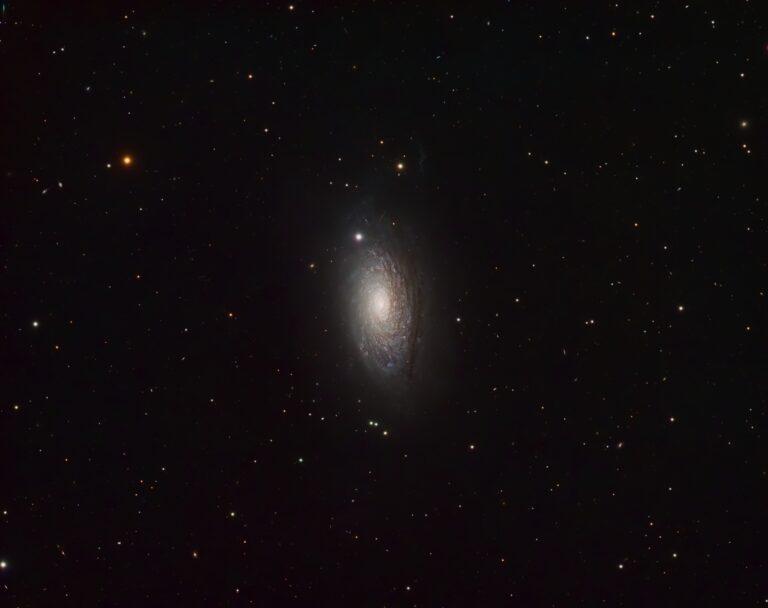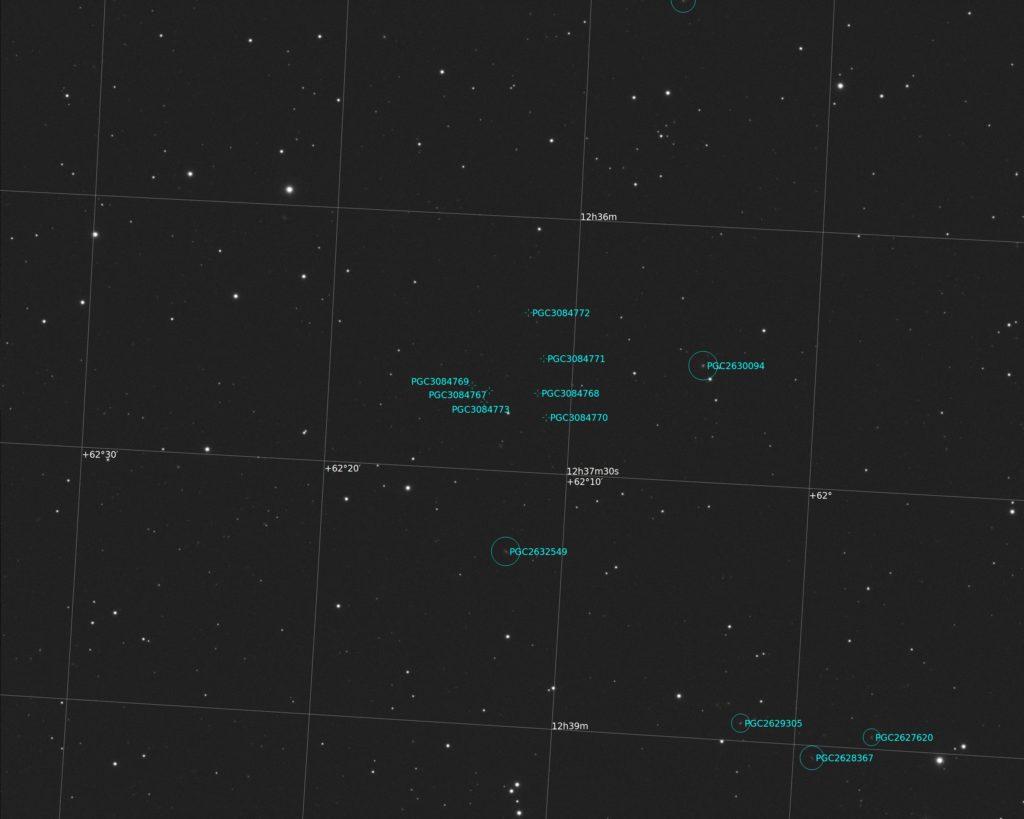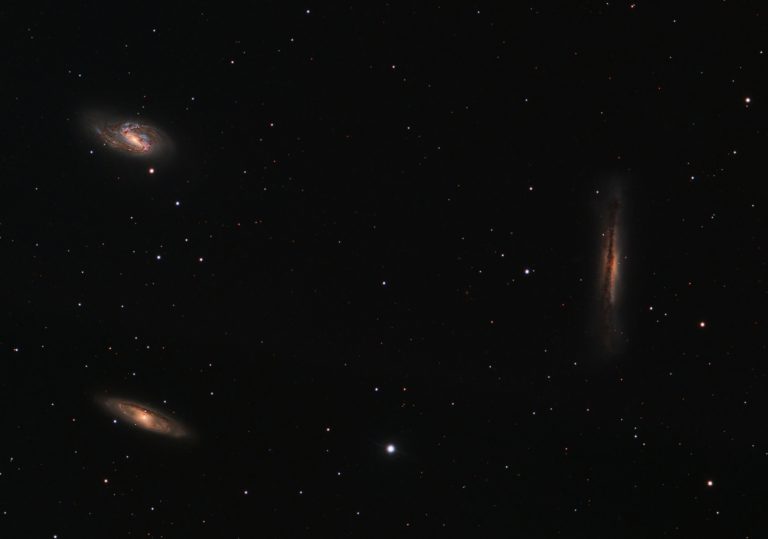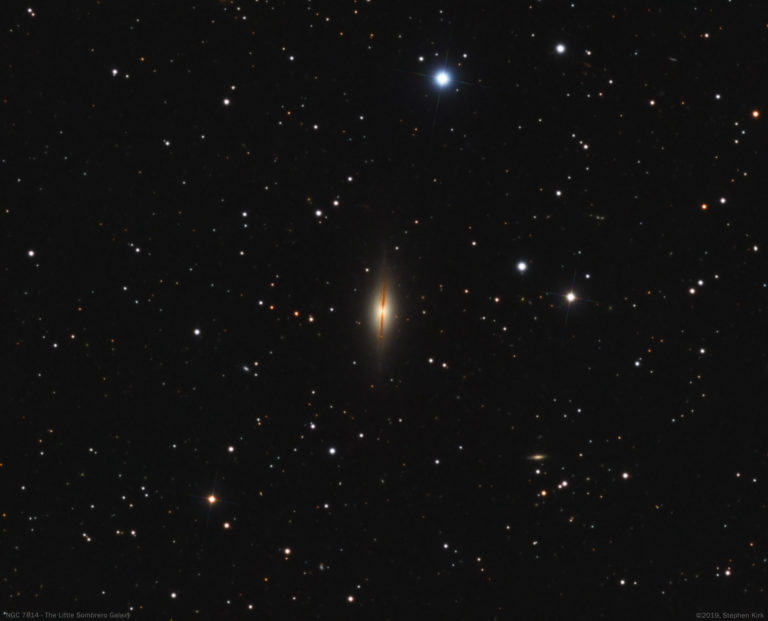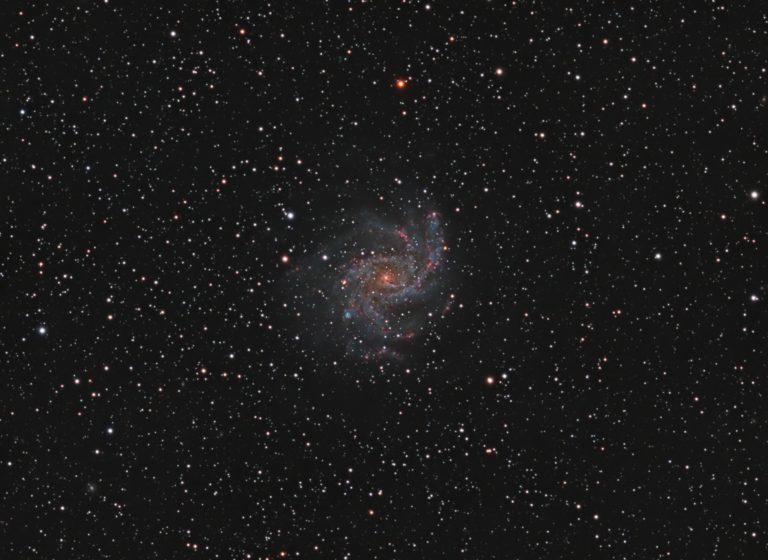M63 is a magnificent spiral galaxy located in the Northern constellation of Canes Venatici, about 30 million light years away. The galaxy is a member of the M51 group. There are lots of faint galaxies in the background. M63 – The Sunflower Galaxy Technical Data Full resolution image here (opens in new tab)M63, often called the Sunflower Galaxy because of its resemblance to that flower, is a spiral galaxy about 27 million light years away in the constellation of Canes Venatici. It is a member of the M51 group of galaxies.I captured the data for this image of the galaxy from my back yard observatory in Nottingham, UK over the nights of 4th and 5th of May 2021 when M63 was high near the zenith. Most of the data was captured in the middle of the night on an automated basis whilst I was asleep in bed! I used my…
Background The Hubble Deep Field (hereon-after the HDF) is an iconic image from the Hubble Space Telescope (HST). In 1995 the HST was instructed to stare at a tiny patch of space in the constellation of Ursa Major that is almost devoid of stars and is far from the plane of the galaxy, enabling the telescope to stare out of the galaxy into the depths of the Universe. It did this for about 190 hours with a total of 340 exposures and in so doing captured some of the most distant galaxies in the Universe, some of which are an astonishing 12 billion light years away. Location of The Hubble Deep Field The Hubble Deep Field through the Hubble Space Telescope The HDF is located above the “bowl” of The Plough (or Big Dipper as it is called in North America) asterism in Ursa Major as can be seen in…
The Leo Triplet is a popular and famous group of galaxies in the constellation of Leo, best viewed in late winter/early spring in the Northern Hemisphere. They are often imaged together like this as the triplet or as individual galaxies. They are located about 35 million light years away and consists of the Messier galaxies M66 (top left in the image), M65 (bottom left ) and to the right we have NGC 3628, commonly called The Hamburger Galaxy. The galaxies are easily visible in a small to mid-sized telescope as faint smudges in this isosceles triangular pattern. The galaxies are sometimes called the M66 Group but ask any astronomer and they will immediately know what you mean if you mention the Leo Triplet! Another famous galaxy group in Leo is the M96 group. The Leo Triplet Technical Details Image captured from my back yard observatory in Nottingham, UK on the…
NGC 7814 – The Little Sombrero Galaxy NGC 7814 is an edge-on spiral galaxy 40 million light-years away in the constellation of Pegasus. IT is nicknamed “The Little Sombrero” because of its likeness to The Sombrero Galaxy M104 in Virgo. Close examination of the picture reveals many tiny galaxies, up to a billion light years away in the depths of The Universe.The dust lanes of the edge-on spiral arms can be easily seen. Image Technical Data NGC 7814 is very remote and so needs a long integration (exposure) time. This image was captured from my backyard observatory in Nottingham, UK over the course of three nights in October 2019 (a very wet period in the UK and the capture nights were 2,17 and 24). It took significant dedication to capture the subframes for this image given the dreary weather circumstances and I nearly gave up on several occasions! I used…
NGC6946 – The Fireworks Galaxy NGC6946 is located on the border between Cygnus and Cepheus and is a fairly bright galaxy about 25 million light years away. It is dubbed the “The Fireworks Galaxy” due to the unusually high number of supernovae that have occured here – ten – that have been observed during the last century. Typically a galaxy would normally have one per century and it is not known why this galaxy has had ten times the average. The galaxy is quite heavily obscured by dust within our own galaxy and this is probably the reason why it was not accorded the honour of a Messier catalogue number. Image Technical Details Imaged from my back yard in Nottingham, UK, during September 2020 whilst high overhead. I used my TEC140 refractor with Atik 460 CCD camera and Astrodon LRGB Generation 2 E series filters and a Ha (3nm) filter. …

